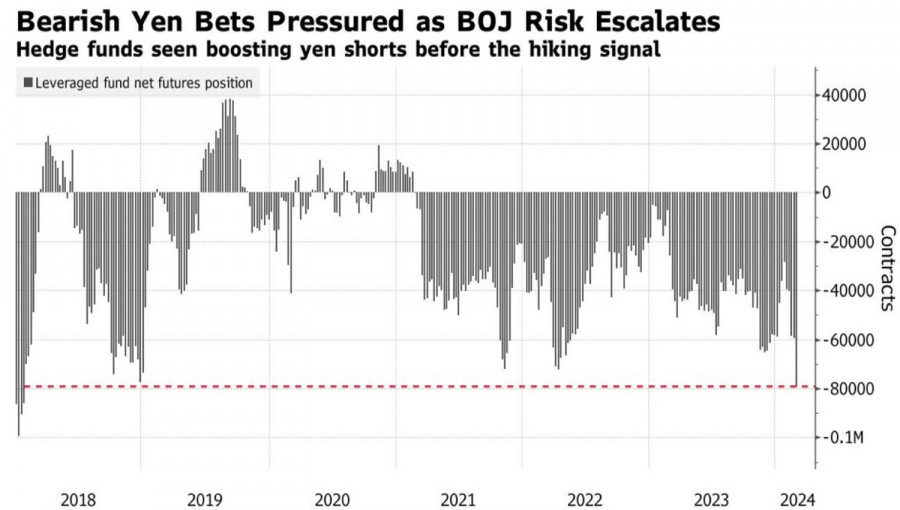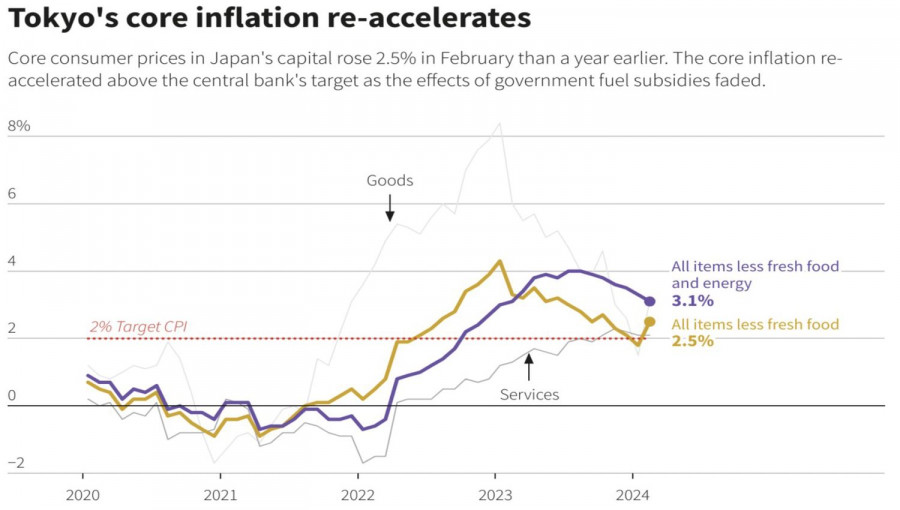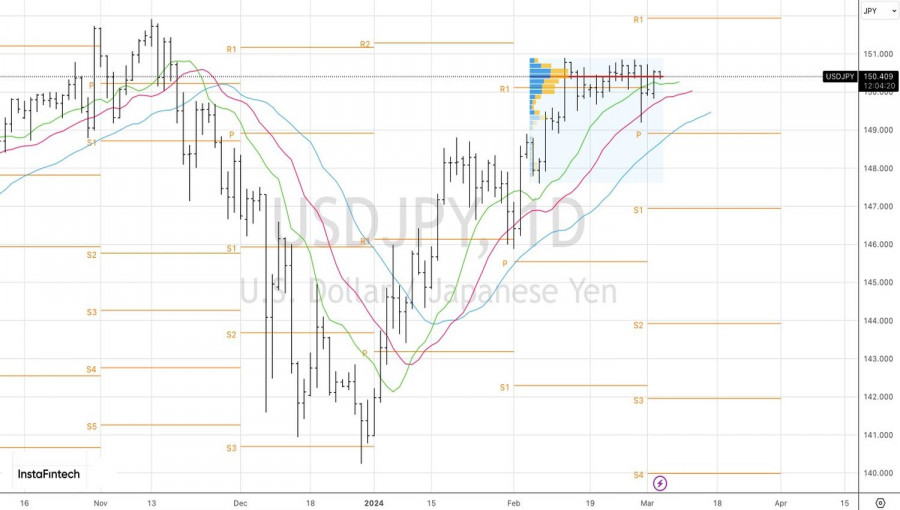While USD/JPY is treading water, hedge funds are increasing net shorts on the Japanese yen to their highest levels since 2018. The pair's consolidation is starting to resemble the accumulation of long positions by major players, which may be followed by an upward breakout. However, bulls and bears have their own cards to play, and I would not rush to conclusions.
Dynamics of hedge funds' positions on the yen

The main drivers of USD/JPY growth are the rapid rally of Japanese stock indices, high demand for carry trade operations, and the Federal Reserve's cautious approach. Since the beginning of the year, the Nikkei 225 has risen by almost 20%, surpassing the psychological level of 40,000 for the first time in history. Non-resident buyers of Japanese stocks actively hedge currency risks by selling yen, especially considering that the interest rate differential allows them to earn additional money on hedging these operations.
Low volatility and a wide yield differential between U.S. and Japanese bonds contribute to the growing popularity of carry trade operations. The yen loses out as the main funding currency. Its use in the game against the Mexican or Colombian peso in 2023 brought a 35% profit. Since the beginning of this year, carry traders' pockets have grown by 4.5%.
The constant shift in market expectations for the first rate cut by the Federal Reserve to a later date strengthens the U.S. dollar against major world currencies. In this regard, the words of Atlanta Fed President Raphael Bostic that the easing of monetary policy will begin in the third quarter and will proceed extremely slowly, meaning not at every meeting but with pauses, inspired bulls on USD/JPY to attack.
Conversely, bears on the analyzed pair are driven by expectations of the Bank of Japan abandoning its long-standing negative interest rate policy. After the release of CPI data in Tokyo, a leading indicator for national inflation, the chances that this will happen in April have risen to 85%. The futures market does not rule out a start in March, especially since the results of wage negotiations will be known on the 15th, and the BoJ Board of Governors' meeting is scheduled for the 18th–19th.
Dynamics of inflation in Tokyo


In February, consumer prices in Tokyo accelerated from 1.8% to 2.5%, returning above the 2% target. On the contrary, core inflation slowed from 3.3% to 3.1%. Service prices remained at 2.1% YoY. The correction in CPI may have come to an end. Subsequent growth in the indicator gives the Bank of Japan grounds to normalize monetary policy. If signals come from it in the near term that this will happen as early as March, the yen will begin to regain lost positions against major world currencies.
Technically, on the daily chart of USD/JPY, consolidation after the formation of the Double Top pattern is gaining momentum. The exit from it can be either upward or downward. Traders may consider setting two pending orders: one for buying from the level of 150.8 and the other for selling from 149.8.
The material has been provided by InstaForex Company - www.instaforex.comfrom Forex analysis review https://ift.tt/nRjelbQ
via IFTTT
